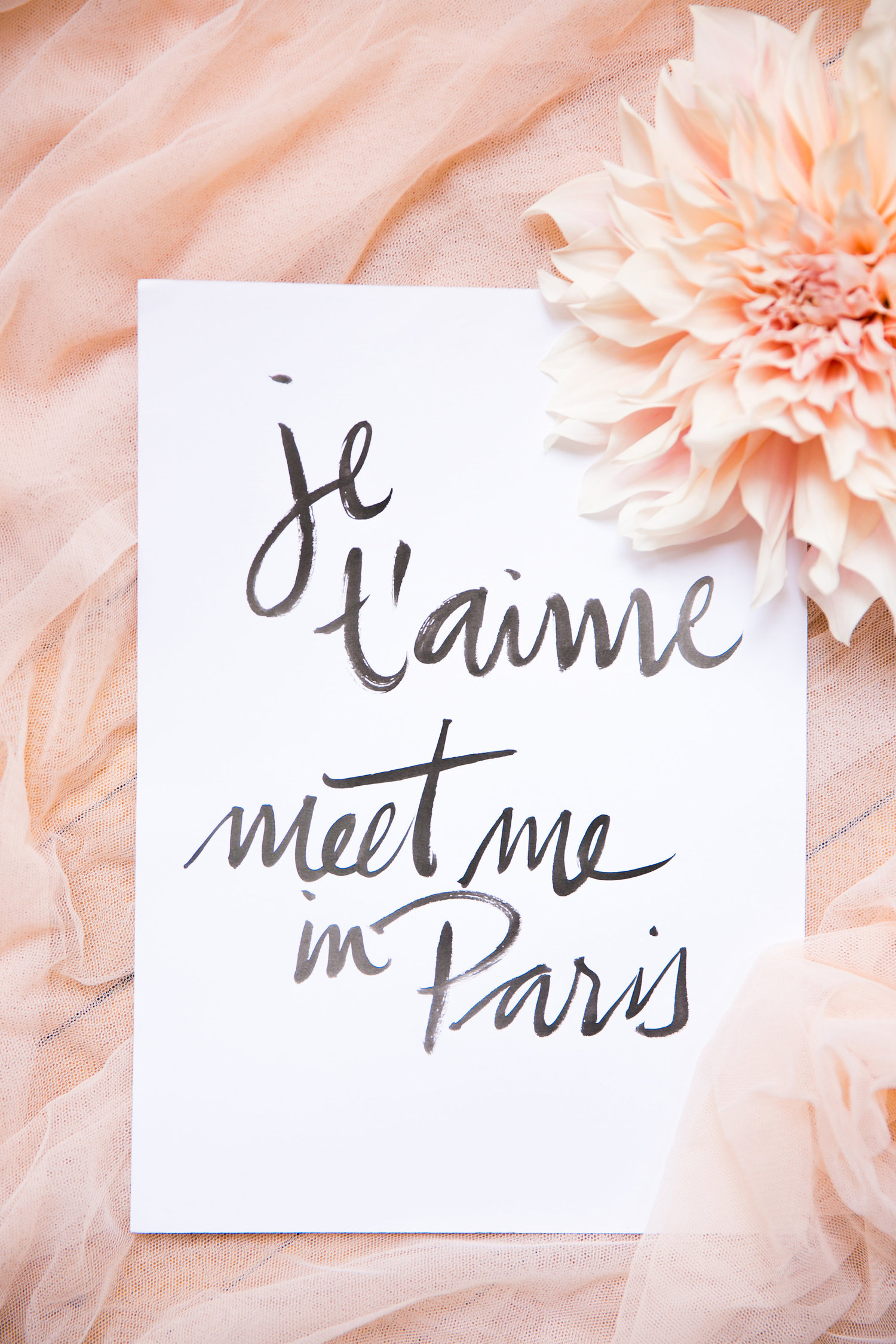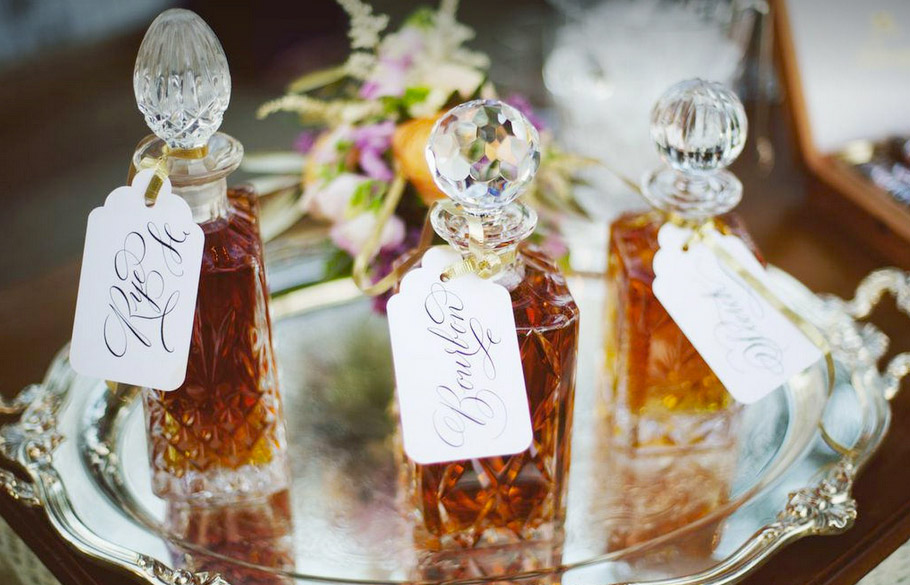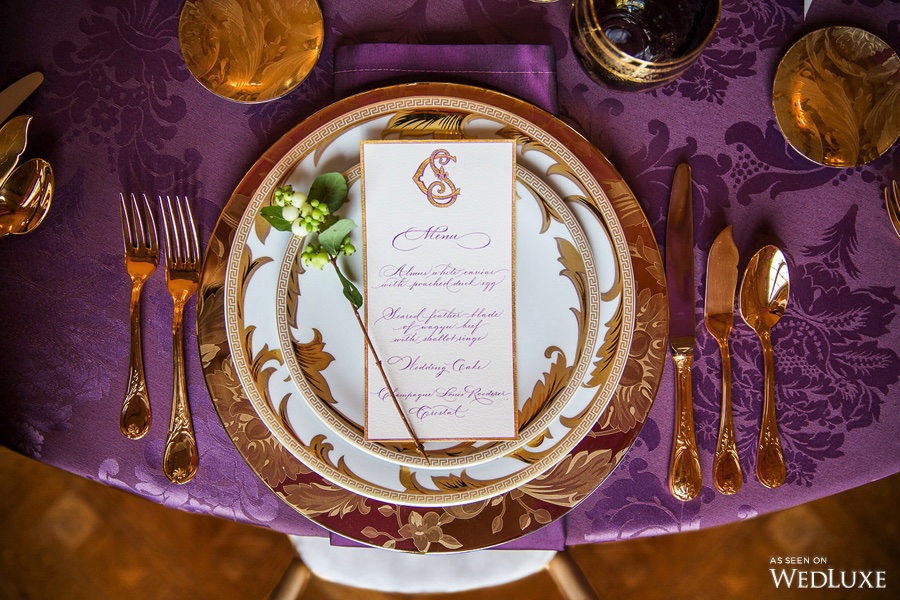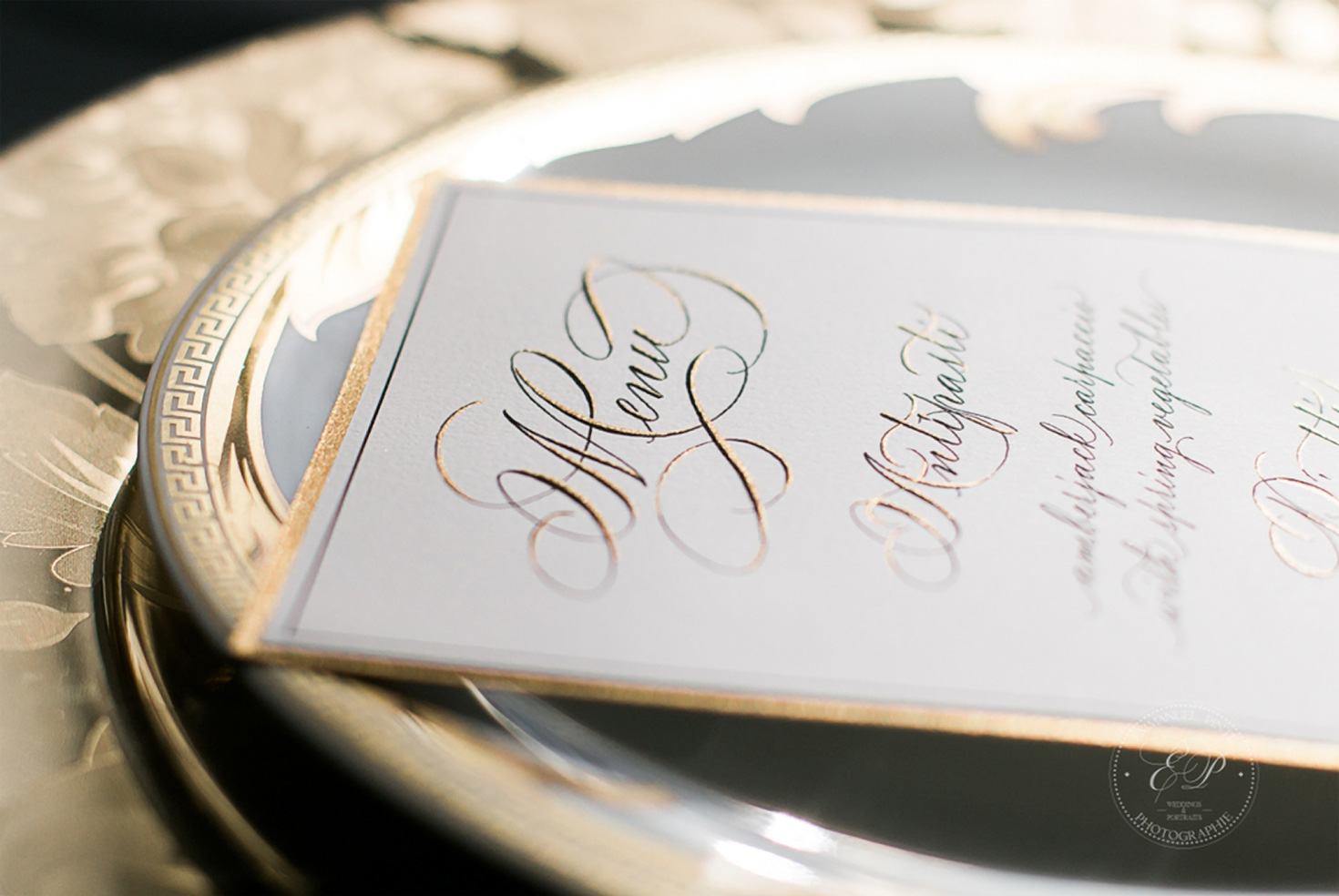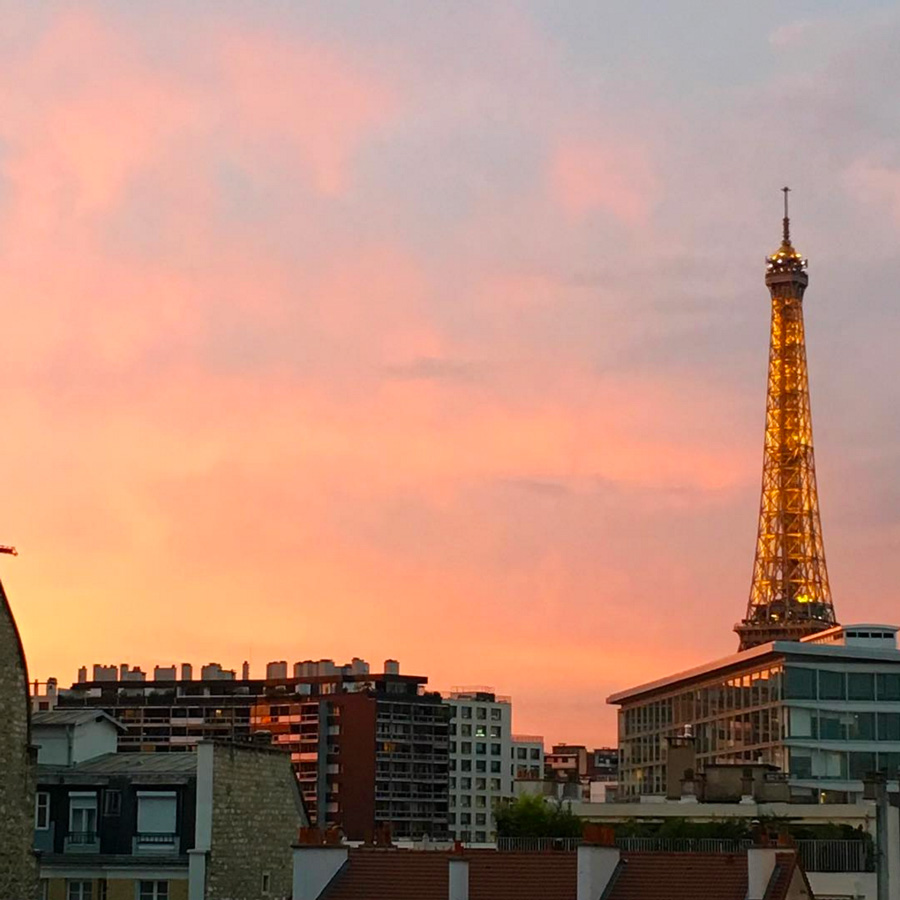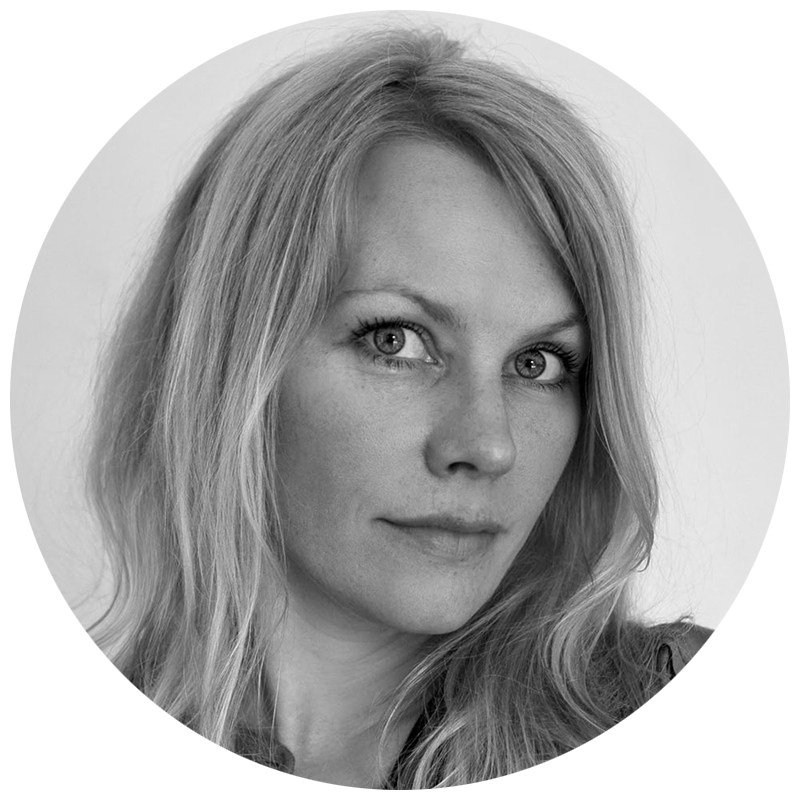Interview: Joy Fairclough
Joy Fairclough is the jaw-dropping talent behind Studio French Blue. A native of Michigan (USA), Joy has called Europe home for many years, and now runs her calligraphy atélier from the heart of Paris.
Her signature calligraphic style is mesmerizing: a delicately flourished, distinct script that I'd be able to identify anywhere. Yet despite its unique character, Joy's work is highly influenced by the disciplined, ornate "styles of old," like Copperplate and Spencerian. This is not surprising when you learn that Joy is an incredibly diligent student of the art, having studied with such teachers as Lieve Cornil and Master Penman Harvest Crittenden. Even her life's other great passion, Ashtanga yoga, reflects the same discipline she applies to her lettering.
I interviewed Joy via email to find out about her calligraphic journey, from a child learning penmanship from her grandmother to a Master's student in Lettering & Design at the European Lettering Institute. She also shares her calligraphy heroes and gives us a peek out the window of her Paris studio. All I can say is this: seeing the Eiffel Tower from one's desk every day must be so uninspiring.
What sparked your interest in calligraphy?
I've always loved calligraphy, since I was a little (indoorsy) kid with a Shaeffer cartridge pen set. I always cared a lot about my handwriting at school, and have always been an avid admirer of beautiful penmanship. I was very close to my grandmother when I was growing up, and she was a talented commercial artist, specializing in illustration, but also lettering. She wrote a beautiful Palmer method penmanship, rolling her forearm on the table to demonstrate the way graceful, elliptical letters were formed with "muscle movement". It was she who first let me play around with her stash of art school supplies, showed me how to hold the pen, and make some attempts at italic and blackletter alphabets. Even in high school, one of my history teachers was a great admirer of beautiful penmanship. He used to start class with 5 minutes of prompted creative writing on one subject or another to warm us up, and he even let me get away with silly circus tricks like upside-down and backwards cursive.... We hit it off!
““The goal is to rest somewhere between effort and ease at all times.””
From skills to values, what makes a freelance calligrapher successful? Specifically, what would you tell a budding calligrapher interested in monetizing her hobby? Also, any thoughts on the way social media is playing an increasingly significant role in creative freelancers' businesses?
I think I am unqualified to answer this question...maybe I ought to recuse myself, actually! I want to preface this by admitting I have real admiration of people endowed with genius for self-promotion and branding, but I'm mostly lacking in motivation when it comes to social media and marketing. I absolutely admire people who are talented in that domain and it's something I need to find time to develop in myself. I wish I could hire it out, to tell you the truth.
That being said, I really would have preferred to devote myself to formal study and theory and avoid the question of monetizing my interest in calligraphy, maybe forever! Or conversely, I would have loved to apprentice and work under a master calligrapher.... I think it would have been wonderful to study and hone my skills for a long time, without worrying about the business side of things. Years ago in the States, I'd cut my teeth on envelope addressing for weddings and Bar Mitzvahs, but there was no website, no promotion. It had all come out of my having designed and addressed invitations for my best friend's wedding shower and the word-of-mouth commissions I received from that. I always considered myself an enthusiast, and while I would have been thrilled at the chance to study formally, I couldn't find any classes or workshops near me in Michigan. I found a six-week course on broad pen italic that met one evening per week at a local high school, but the quality of the instruction was poor. I bought myself Mastering Copperplate Calligraphy by Eleanor Winters and a sampler set of nibs from Paper & Ink Arts and played around with those in my spare time.
Skip forward a few years and I was living in the South of France, parlaying my dance background into a part-time job teaching ashtanga yoga at a school in Montpellier, coupled with great experiences such as ashtanga-ing in Finland and Sweden, even studying meditation in Spain. Besides that, I had a job polishing the English-language conference presentations of scientists and researchers at the French pharmaceutical company, Sanofi-Aventis. It was an eclectic existence! I enjoyed my jobs, and loved being in Europe. I missed the letters, though, so ordered myself a haul of pens and nibs from the States and jumped back into self-study. If I'd had a hard time finding pointed pen instruction in the States, there was even less in France. There wasn't an oblique pen to be had for love or money!
Another couple of years went by and by that time I had gotten married and was living in the countryside in a former silk-farm-turned-Chestnut-orchard when we weren't traveling for yoga in Italy and the Nordic climbs! I was casting around for something more to do than teach a small class of five yoga students three mornings per week when in France. Around that time, a friend in London was getting married and reached out to me, asking me to design her wedding invitations. She remembered me talking about calligraphy and offered me the opportunity, so I went to work trying to bring my skills up to speed and immersing myself in what I would need to know to create a letterpress set of invitations. It was thrilling for me.
At that time, I found an online class in digitizing calligraphy taught by Master Penman Harvest Crittenden. I learned about and joined IAMPETH, discovered Spencerian and Ornamental penmanship, and the calligra-sphere really started exploding. Suddenly there seemed to be an abundance of online classes on offer, and workshops everywhere (though not so many in France, at least for pointed pen). Another thing that gave me serious pause was the dominate trend in calligraphy at the time: there were tons of new websites and Etsy boutiques opening up every day, and the going thing seemed to be kind of a messy, unstructured style meant to look untrained. Sort of an “outsider art” aesthetic. I wasn't sure many people would be interested in the styles I wanted to develop. Also, I wanted to see if I could make a living lettering; I wasn’t eager to supplement my income by teaching.
Honestly, I had serious doubts at that time about whether there would be any point in my trying to hang a shingle and, in fact, monetize my calligraphy hobby. I think I had very few Instagram followers that didn't have a link to their own calligraphy website in their bios and I wasn’t sure how I would find clients. However, as I explained above, I really needed to find a niche for myself and more opportunities to earn money in a rural area. Lucky enough, that letterpress invitation design did turn into another couple of jobs, and my business grew from there. I believe I ended up with a little corner of the market who appreciated the style I was trying for, and if anything, my amateurism was maybe a little less glaring in the marketplace next to the hundreds of newborn calligraphy sites that were popping up every day. So, I guess my advice would be to enjoy the learning process and take your time. Study as much as you can, practice for as long as you can, because that’s the best part.
I understand that you are pursuing a Master’s program in Calligraphy & Design at the European Lettering Institute in Bruges, Belgium. Congratulations! Can you tell us what a graduate degree in calligraphy entails?
Yes, I'm enrolled at the ELI in Bruges this year. It will probably take me a couple of years to complete the Master's as I'm combining the course of study with my full-time work in Paris. The director of the school, Lieve Cornil, was a star pupil at the former Scriptorium in Toulouse (now defunct), and has reassembled many of the most respected names in design, typography, lettering, and calligraphy under the umbrella of her new school, which she elected to base in her home country of Belgium rather than in France where she'd studied. She has lived and worked as a designer in many countries, including the U.S. and the U.K.
The certification I'm working on is in Lettering and Design, and about half the students in the Master's program are graphic designers who have come to deepen their skills in drawing, composition, and lettering. I'll also be working closely with the director on the digital side of the profession, hopefully mastering the tools and techniques that will allow me more creative control of my projects, from conception to print and web-ready artwork. The first few weeks of study at ELI took us from skeleton Roman Capitals to imagining and executing an entirely new letting style based on our sketch studies of a pair of eyeglasses, and designing a logotype based on that project. So far so good, Lieve is strict, funny, and whip-smart. I'm really glad to be under her tutelage, and wonder what she'll make of me!
Who are the calligraphers – past or present – from whom you draw the most inspiration?
Around the time I put up a website and crossed my fingers, I happened across an article written by the very talented Erica McPhee of Paperwhite Studio, whose website and contemporary calligraphy I had been admiring since I first started studying from Eleanor Winter's book. I can still picture her gorgeous logo, the freedom and control in those flourishes. If I recall correctly, her article advised young calligraphers to study classic forms as much as possible before launching themselves into business. A "know the rules before you break them" message. I ended up reaching out to her just to tell her how much I admired her calligraphy, and she was beyond encouraging, really giving me the confidence to go ahead and see what I could make of myself as a lettering artist. She saw something in my work and she was generous enough to advise me. Some time later, she did me the enormous honor of making me the Featured Artist for the first issue of Dasherie Magazine. I also took a Copperplate and Spencerian class from Harvest again, whose thoughtful and methodical critiques helped train my eye. She is a kind and lovely person and I'm so grateful for her instruction.
Other heroes.... I pour over the work of Francis B. Courtney, from the Golden Age of American penmanship. I'll spend hours with my nose in compendiums of work from the 19th to the early 20th century, marveling at the precision and mastery of that age. The original Modern calligraphy! The most graceful of tremor-free hairlines, executed with rhythmic speed and the absolute control that makes the spontaneity look so masterful, take my breath away. I work mostly in stationery design for print and reproduction, so even if I were capable of producing this kind of fine work, I'd need to thicken it up in postproduction.
I still wish I could wield a pen with the perfect control and finesse of my Facebook friend (and hopefully future instructor) James Fazz Farrell! I think he's the most talented pointed penman going. Rachel Yallop's pointed pen work is astounding and I look forward to studying with her at ELI. I had the pleasure of meeting Julien Chazal recently as he's just an incredible talent — it's hard to get one's head around his creativity and command of so many different calligraphic disciplines. John Stevens's work in Roman caps is almost unbelievable! Master Penman Brian Walker gave me generous encouragement as well when I joined his study group, exchanging long emails with me as we got to know each other, and even putting the lowly little envelope in which I had mailed my subscription fee on the cover of his wonderful newsletter. An auspicious start.
““I’ve been thinking about how to ritualize [calligraphy], to hone it, so that I can make a kind of mandala from drills, rhythms, and flourishes until they become part of me.””
You have said that your practice of Ashtanga yoga has parallels with your study of calligraphy. Can you tell us how, for you, these two pursuits influence one another?
Well, I'm definitely someone who finds rules...freeing. If there is a correct method, I want to know about it. I love to study. I find rhythms and repetition soothing and spacious. Ashtanga yoga follows a more or less strict series of postures that one practices daily, in order, not skipping ahead in the series until the current posture has been "mastered", or the current lesson understood and embodied. Programmed into the muscle memory. It's a moving meditation, with focus on long, slow breathing and control — whether you're hanging out for a long while in a deep lunge, an edge-of-uncomfortable stretch that your nervous system is telling you to get out of RIGHT NOW, or while balancing on your hands or forearms upside down. Practicing these same movements over a long period of time allows the student to bring an ever-finer concentration and quality of intention to each movement and each breath. With time, things that are crazy-difficult begin to look...effortless. The goal is to rest somewhere between effort and ease at all times. There's a wealth of sensorial information to experience, there's a never-ending stream of information from your nervous system and your discursive mind that you get better at observing and releasing, rather than obsessing about or engaging with. Basically this is the "zone" that TedEx speakers are fond of talking about. ;)
When I come close to applying this kind of head space to my calligraphy practice, I get better results. Personally, I don't experience the most improvement and progress in the quality of my lettering when I'm just randomly inventing. When I can move into my muscles, into technique, into breath, sometimes I end up producing letterforms I really like. I'm just a baby in this practice, but I've been thinking about how to ritualize it, to hone it, so that I can make a kind of mandala from drills, rhythms, and flourishes until they become part of me. In the meantime, as much as possible, I'm putting myself in the way of the artists and teachers who will correct my method, take apart my work and show me what I haven't noticed myself, and bring me back to basics. Thus far, I have to consider myself mostly self-taught. I'm therefore more than ready to spring clean, to get rid of those bad habits naturally picked up when one hasn't been trained from scratch.
Recently you moved from the South of France to the City of Lights (and I, for one, couldn’t be more jealous). Can we have a peek at your Parisian atélier?
Yes, since July I've had the pleasure of this view from my Paris atelier, part-time! After a year and a half of maintaining a studio space in a small city near the country house (said country house being a Domaine with only a name to identify it, and neither a street number nor even a street, making it impossible for me to rely on the delivery services essential to working à distance), now business is such that I can keep an apartment in Paris and I couldn't be luckier. That means that as a couple, for the first time, it's possible for us to split our time between Paris and the province, bringing a lot more balance into the life of this city-girl, at least — and putting me nearer to my clients in the capitol and my studies in Bruges.
Molly Suber Thorpe // Calligrafile Founder & Core Contributor
Molly is the calligrapher, teacher, and author behind Plurabelle Studio. Her book, Modern Calligraphy, has reached tens of thousands of budding calligraphers, is available in Spanish and Chinese translations, and was named an Amazon Craft Book of the Year in 2013. Molly graduated from UCLA's Design Communication Arts program in 2009 with a concentration in typography and layout design. After spending nearly a decade in Los Angeles, Molly now resides in Athens, Greece, where she works with clients all over the world.
Joy Fairclough // Contributor
Joy is an American calligrapher residing in Paris, France. Her calligraphic work for luxury and couture brands has received international renown, and was recently featured in Vogue Paris. She organizes her life around two disciplines: Ashtanga yoga and calligraphy. In the practice of each, she finds absorption and balance. The inspiration for her studio's name comes from her love of the blues of the South of France and the blue and white hand-painted tiles which the French call bleu faïence.





